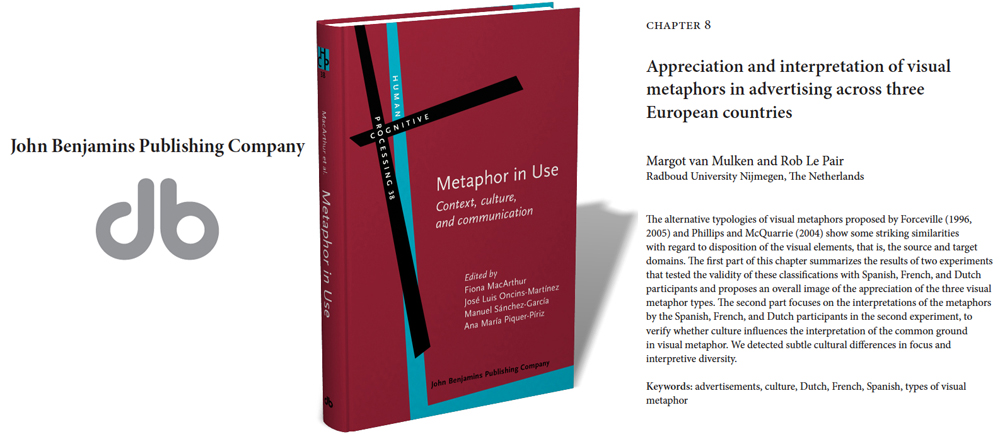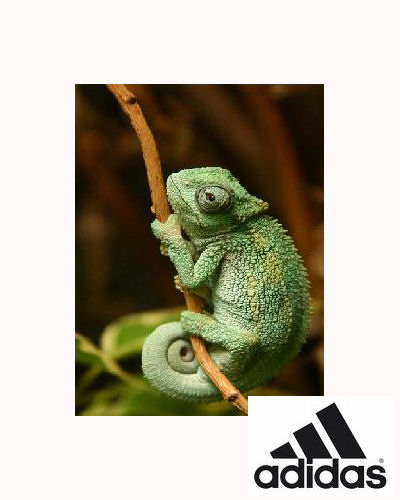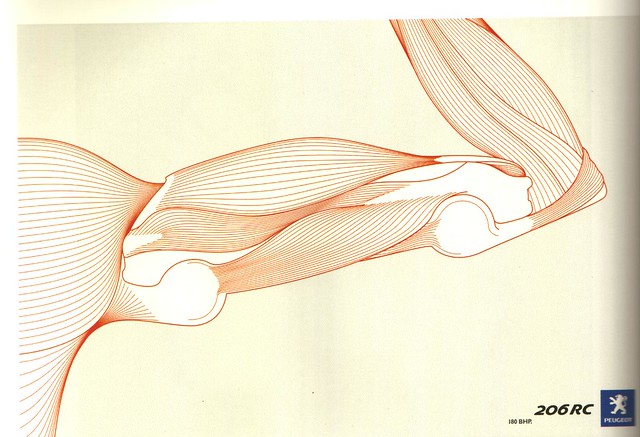[squeeze_box2]Dit blogartikel is een verkorte versie van de studie van Margot van Mulken en Rob le Pair (2012).
In deze studie doen we verslag van twee onderzoeken:
1. verschillen tussen Nederlandse, Franse en Spaanse consumenten in hun waardering van verschillende typen visuele metaforen in advertenties;
2. verschillen tussen Nederlandse, Franse en Spaanse consumenten in hun interpretatie (herkenning van de common ground) van visuele metaforen.
Hieronder staat de volledige referentie van onze studie
[/squeeze_box2]
[titled_box title=”Margot van Mulken en Rob le Pair (2012)” bgcolor=”” textColor=”#ffffff”]
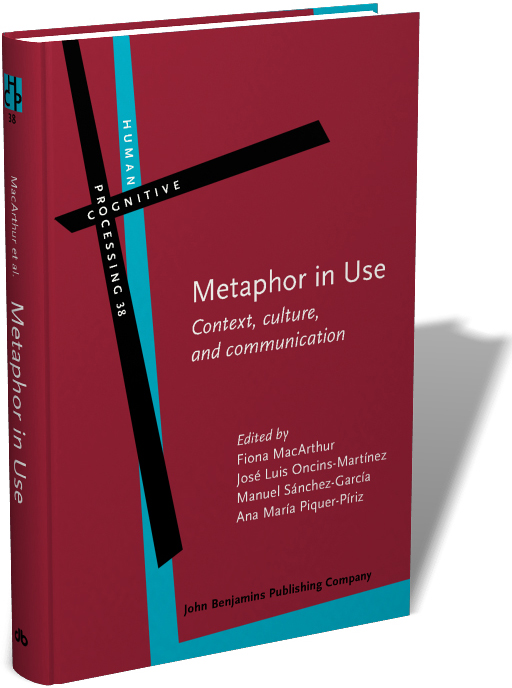
Appreciation and interpretation of visual metaphors in advertising across three European countries. In MacArthur, Fiona, José Luis Oncins-Martínez, Manuel Sánchez-García and Ana María Piquer-Píriz (eds.), Metaphor in Use. Context, culture, and communication, chapter 8, pp. 177-193. Amsterdam/Philadelphia: John Benjamins.
Abstract
The alternative typologies of visual metaphors proposed by Forceville (1996, 2005) and Phillips and McQuarrie (2004) show some striking similarities with regard to disposition of the visual elements, that is, the source and target domains.
The first part of this chapter summarizes the results of two experiments that tested the validity of these classifications with Spanish, French, and Dutch participants and proposes an overall image of the appreciation of the three visual metaphor types.
The second part focuses on the interpretations of the metaphors by the Spanish, French, and Dutch participants in the second experiment, to verify whether culture influences the interpretation of the common ground in visual metaphor. We detected subtle cultural differences in focus and interpretive diversity.
[/titled_box]
[pullquote4 quotes=”true” align=”center”]Metaphor is a fascinating phenomenon, but it is also complex and multi-faceted, varying in how it is manifested in different modes of expression, languages, cultures, […] How does the language or culture of speakers and hearers affect the way metaphors are produced or interpreted? (1) [/pullquote4]
[clearboth]
[margin30]
Background
Research in intercultural communication assumes that in everyday life the French and the Spanish are more familiar with indirect and contextualized speech (high-context cultures) than the Dutch (Low-context culture) who prefer more explicit and direct communication (Hall & Hall, 1990).
Typologies of visual metaphors disposition of the visual elements, that is, the source (brondomein) and target domain (doeldomein).
[fancy_table]Table 1 Voorbeelden van verschillende structuren van visuele metaforen (klik op afbeelding voor vergroting)
[/fancy_table]
[margin30]
Hypothesis and research questions
[arrow_list]
- We hypothesized that French and Spanish participants have a higher appreciation of more complex metaphors than Dutch participants.
[/arrow_list]
In order to investigate this cultural factor, we examined how French, Dutch, and Spanish participants respond to the three types of visual metaphors.
[arrow_list]
- Does culture influence the interpretation of the common ground in visual metaphors?
[/arrow_list]
Our study
Our analyses are based on
[arrow_list]
- two experiments that investigated the appreciation of the three metaphor types;
- a content analysis of the qualitative data gathered in the second experiment.
[/arrow_list]
In the first part of our study we dealt with appreciation; in the second part, we focused on interpretive diversity.
[margin30]
1. Appreciation
[margin20]
Experiment 1
Appreciation was investigated by the judgements of participants from the Netherlands (202), France (83), and Spain (89) who viewed the same 24 advertisements: 6 similes, 6 hybrid metaphors, 6 contextual metaphors (and 6 advertisements that contained no metaphor and served as a base line).
Experiment 2
In our second experiment, we tried to stabilize the possible effect of product involvement and therefore we chose to examine only automobile advertisements. Appreciation was again investigated by the judgements of participants from the Netherlands (75), France (68), and Spain (69) who viewed the same 20 automobile advertisements: 5 similes, 5 hybrid metaphors, 5 contextual metaphors (and 5 advertisements that contained no metaphor and served as a base line).
Since the outcomes of our appreciation studies present a similar pattern, we decided to collapse the two data bases, and to compute the appreciation results for both our experiments:
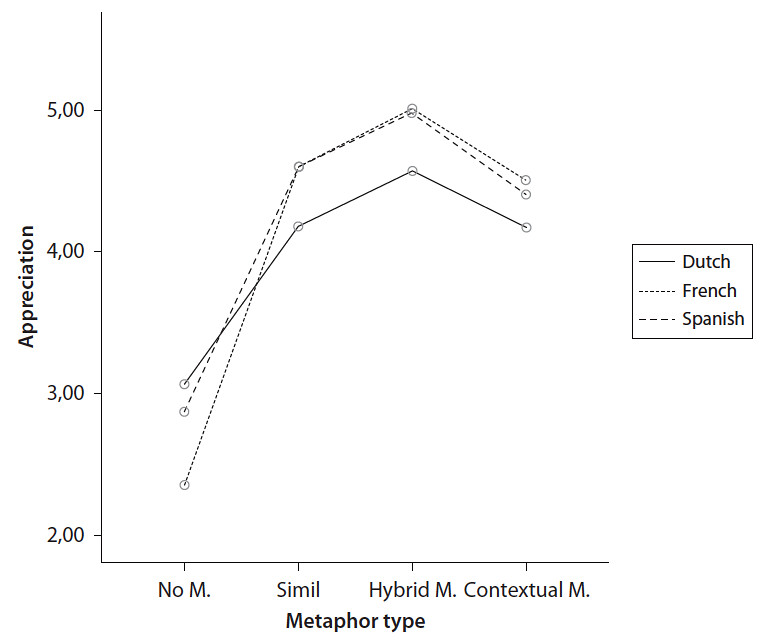
[margin20]
The results of two experiments that tested the effects of the three metaphor types on appreciation show that:
[arrow_list]
- it is always the medium complex metaphor type, hybrid or fusion, that is liked best.
- the Spanish, French and Dutch respondents did not differ with regard to the effect of metaphor type, but the Spanish and the French participants appreciated all three metaphor types significantly more than the Dutch.
[/arrow_list]
We conclude that:
[arrow_list]
- the use of relatively complex visual metaphors is appreciated to a certain extent: if cognitive elaboration requires too much effort (such as in contextual metaphors or replacements), appreciation decreases. Complexity, within limits, is pleasurably arousing, and will also be related to greater ad liking. However, too much complexity reduces comprehension and appreciation of the ad;
- it might be the case that for the Dutch consumers, being members of a low context culture, the lack of explicit information causes more difficulties in processing the (lack of) information when interpreting a complex visual message. Spanish and French consumers might be more used to processing implicit complex messages.
[/arrow_list]
[margin40]
2. Interpretive diversity and common ground
Interpretive diversity can be defined as the range of different interpretations a metaphor evokes. For instance, the comparison of the anti-dandruff shampoo and the vacuum cleaner invites the interpreter to map notions like ‘cleanliness’, ‘ease’, ‘everyday job’, and ‘swiftness’ to the shampoo and the vacuum cleaner:
[one_third]

[/one_third]
[one_third]

[/one_third]
[one_third_last]

[/one_third_last]Figure 2. Three different metaphorical dispositions where shampoo is compared to a vacuum-cleaner
[margin20]
These common grounds are linked together, and can be seen as a network of associations that all contribute to the richness of the metaphor, but they can also be identified as different aspects of the comparison.
1. Recognition of the metaphor
In the second experiment (with only automobile ads), the questionnaire contained the question: ‘When you first saw the advertisement, did you see a comparison?’ If participants answered ‘yes’ to this question, the screen prompted an open question that started with the words: ‘In this ad, the car is compared to …’
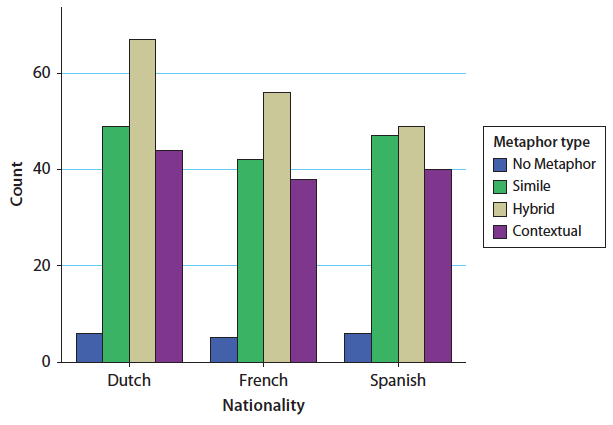
[margin20]
[arrow_list]
- As expected, most participants did not see a comparison in the advertisements that, indeed, did not contain a metaphor.
- We also see that grosso modo, our participants recognized more often a metaphor in hybrids than in the two other types of metaphor.
- Whereas the Dutch and French seem to find it easier to recognize a metaphor in hybrids than in similes and contextual metaphors, the Spaniards make no difference between the three types of metaphor with regard to the recognition. This difference is not significant.
[/arrow_list]
2. Interpretive diversity
Analisis
[arrow_list]
- Two judges scored the individual answers to the open question. This permitted us to analyze the references to the common ground of the metaphors with regard to interpretive diversity.
- All verbalizations were analyzed and qualified with regard to the common ground in the comparison. Although some respondents chose to mention only the source of the comparison (“shoe“, in an ad where a car is compared to a shoe), a large quantity of participants provided longer answers, for example “une belle paire de chaussure confortable“, which permitted us to score ‘beauty‘ and ‘comfort‘ as two different bases for comparison. In fact, most participants opted for longer answers than the mere provision of the source.
- Often, a respondent evoked more than one common ground, as in the example of the French participant. Of course, since we did not specifically ask for it, many respondents may very well have identified the common ground without mentioning it. The number of respondents being substantial, and the conditions being equal to all participants, we think it is possible to gain insight in the differences in the evoked common grounds between the three countries.
[/arrow_list]
[margin20]
Interpretive diversity
In order to quantify interpretive diversity, we scored each answer with a reference to a common ground by labeling it with the noun that best covered the given qualification. This allowed us to verify whether the three countries differed in interpretive diversity.
Interpretive diversity is a rather complex concept: it is difficult to define what exactly qualifies as a ‘different’ interpretation. For instance, in the case of the contextual metaphor of a car that is replaced by a star fighter, some French respondents noted la vitesse de l’avion whereas others wrote rapidité, and some Spanish respondents mentioned velocidad while others said rapidez. Since vitesse and rapidité are quasi-synonyms in French (and so are the Spanish equivalents), these two answers have been scored as one and the same interpretation: ‘speed‘. However, one of the French respondents had written la vitesse du son, referring to a specific quality of fighter jets, and apparently he or she thought that it is ’the speed of sound’ that should be mapped to the car. Such a modification of the qualifier ‘speed’ has been coded as a different interpretation, namely ‘speed of sound’.
Figure 4 shows the totals of all different interpretations per group of respondents and per metaphor type.

[margin20]
Analisis
[arrow_list]
- Although contextual metaphors most heavily rely on context, and thereby presupposes more cognitive elaboration, and therefore may evoke more diverse interpretations, this is not the case if we generalize over all our stimuli with contextual metaphor: contextual metaphors did not evoke more different common grounds than the other two types of metaphor.
- However, the advertisement that elicited the largest quantity of different common grounds was a contextual metaphor: the advertisement that compared the car to a puma scored by far more diverse interpretations than other metaphors, and this is true for all three nationalities (19 different common grounds while on average, a metaphor scored 12.5 different common grounds).
- The Spanish participants verbalized significantly less different bases of comparison than the Dutch and the French in ads that contained a Hybrid metaphor.
[/arrow_list]
The different associations that metaphors evoke and that serve as bases for common grounds, are generally linked together, and can be represented in a network. For instance, one of our stimuli compared the car to the king of chess:

When interpreting this metaphor:
[arrow_list]
- Dutch participants referred mainly to common grounds such as ‘importance’, ‘competition’, ‘strategy’, ‘intelligence’, ‘power’, and ‘cleverness’, qualifiers that could be grouped into one hierarchical node of common grounds ‘POWER PLAY’.
- The French respondents also acknowledged this POWER PLAY feature of the chess play, by mentioning ‘importance’, ‘intelligence’, ‘dominance’, ‘power’, ‘performance’ and ‘strategy’, but they also added ‘luxury’, ‘class’, ‘grace’, ‘grandeur’, ‘prestige’, ‘royalty’ and ‘supremacy’, thereby accentuating a different hierarchical node of common grounds, MAJESTY. Apparently, the French common associations with chess give rise to a broader, and perhaps a richer field.
- The Spanish respondents also referred to the ‘POWER PLAY’ characteristics of the king of chess (‘power’, ’the best’, ‘superior’), but like the French, and contrary to the Dutch, we recognized in the Spanish reactions to this ad a clear second hierarchical node of common grounds similar to the French: MAJESTY, which was expressed by verbalizations like grandeza, elegancia, distinción and majestuosidad.
[/arrow_list]
Something similar happened in the case of the advertisement where the car is compared to a shoe: the French participants find 18 different common grounds that shoes share with cars, whereas the Dutch mention no less than 26 common grounds, and the Spaniards only 7.

The common grounds can be grouped into three hierarchical network nodes: UTILITY, CLASS and COMFORT. It appears that all three nationalities mention common grounds that can be grouped into one of these three hierarchical network nodes, but the French are more specified in their qualifiers than the Spaniards, whereas the Dutch are even more specified than the French. Table 4 shows the various common grounds with shoes. For the Dutch participants, the shoe metaphor is a more diverse and richer comparison than for the French, who, on their turn, view this metaphor as more diverse and richer than the Spaniards.
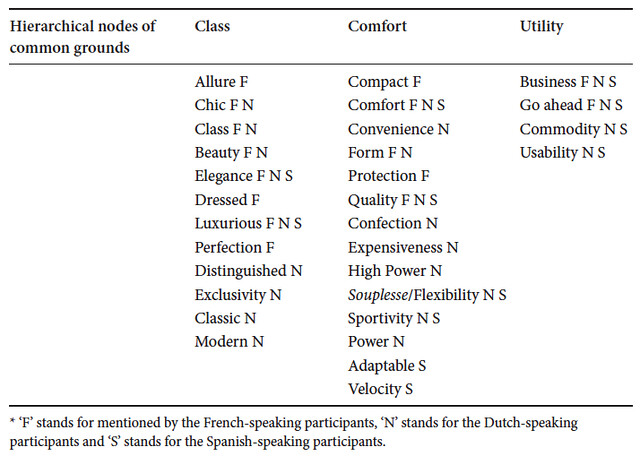
We see then that cultures can differ not only in the type of common ground networks that metaphors can evoke, but also in the degree of detail with which a hierarchical node of common grounds is filled in.
[margin30]
Final remarks
In this study, we have used both a quantitative and qualitative method to investigate interpretive diversity. In future research, data collection could be improved by using thinking-aloud methods or protocols, that allows to tap into the different mappings participants make when processing visual metaphors.
It is often thought that a picture can paint a thousand words. In the discussion on globalization in the field of communication, and certainly in the field of advertising, De Mooy (2004) stresses that it is of the utmost importance to localize campaigns, and adapt them to the value systems that are typical of a certain culture. In this contribution, we have shown that the use of visual figurative communication in advertising, especially metaphors, is highly appreciated by Spanish, French and Dutch respondents. We have also seen that the choice of the complexity of the visual structure is not hindered by cultural biases: both high context and low context cultures show the same pattern of preferences. We have also seen that, with regard to interpretive diversity, cultures – although relatively cognate – tend to diverge. The same metaphor evokes slightly different networks of associations in each culture. Cultures differ in the richness that certain individual metaphors evoke.
[margin50]
De context van deze publicatie
Onze studie is hoofdstuk 8 in het boek Metaphor in Use. Context, culture, and communication.
Over dit boek:
[one_sixth]
[/one_sixth]
[five_sixth_last]
Metaphor is a fascinating phenomenon, but it is also complex and multi-faceted, varying in how it is manifested in different modes of expression, languages, cultures, or time-scales. How then can we reliably identify metaphors in different contexts? How does the language or culture of speakers and hearers affect the way metaphors are produced or interpreted? Are the methods employed to explore metaphors in one context applicable in others? The sixteen chapters that make up this volume offer not only detailed studies of the situated use of metaphor in language, gesture, and visuals around the world – providing important insights into the different factors that produce variation – but also careful explication and discussion of the methodological issues that arise when researchers approach metaphor in diverse ‘real world’ contexts. The book constitutes an important contribution to applied metaphor studies, and will prove an invaluable resource for the novice and experienced metaphor researcher alike. [1]
[/five_sixth_last]
Het boek Metaphor in Use. Context, culture, and communication is deel 38 in John Benjamins’ series HCP: Human Cognitive Processing: Cognitive Foundations of Language Structure and Use

The book series Human Cognitive Processing: Cognitive Foundations of Language Structure and Use is a forum for interdisciplinary research on the grammatical structure, semantic organization, and communicative function of language(s), and their anchoring in human cognitive faculties. Accordingly, the series will publish works addressing the nature of cognitive systems and processes involved in speaking and understanding natural language(s) – including their connections to general knowledge, behavior, and perception – and the relation between language and thought. [2]
[margin40]
Verwijzingen (alleen die in dit blogartikel worden genoemd)
Forceville, Ch. (1996). Pictorial Metaphor in Advertising. London, New York: Routledge.
Forceville, Ch. (2005). Addressing an audience: time, place, and genre in Peter van Straaten’s calendar cartoons, Humor, 18(3), 247-278.
Hall, E. T., & Hall, M. (1990). Understanding cultural differences. Yarmouth: Intercultural Press.
Phillips, B. & McQuarry, E. (2004). Beyond visual metaphor: a new typology of visual rhetoric in advertising, Marketing Theory, 4(1/2), 111-134.
[1] John Benjamins Publishing Company, over [fancy_link link=”http://www.benjamins.com/#catalog/books/hcp.38/main” target=”blank”]Metaphor in use[/fancy_link]
[2] John Benjamins Publishing Company, over de book series [fancy_link link=”http://www.benjamins.com/#catalog/books/hcp/main” target=”blank”]Human Cognitive Processing: Cognitive Foundations of Language Structure and Use[/fancy_link]
Zie ook Phillips, B.J. en McQuarrie, E.F. (2009)
Impact of Advertising Metaphor on Consumer Belief: Delineating the Contribution of Comparison Versus Deviation Factors. Journal of Advertising, 38(1), 49-61
Besproken in blog-artikel [fancy_link link=”http://roblepair.nl/metaphors-in-advertising/”]Metaphor in use[/fancy_link]
[margin40]

